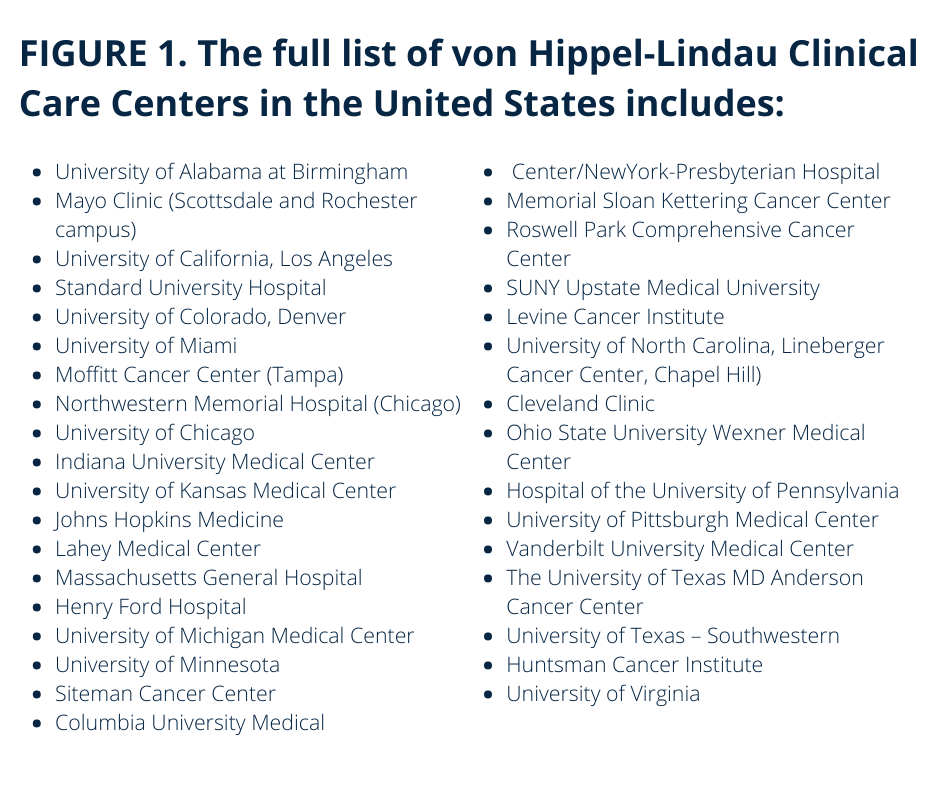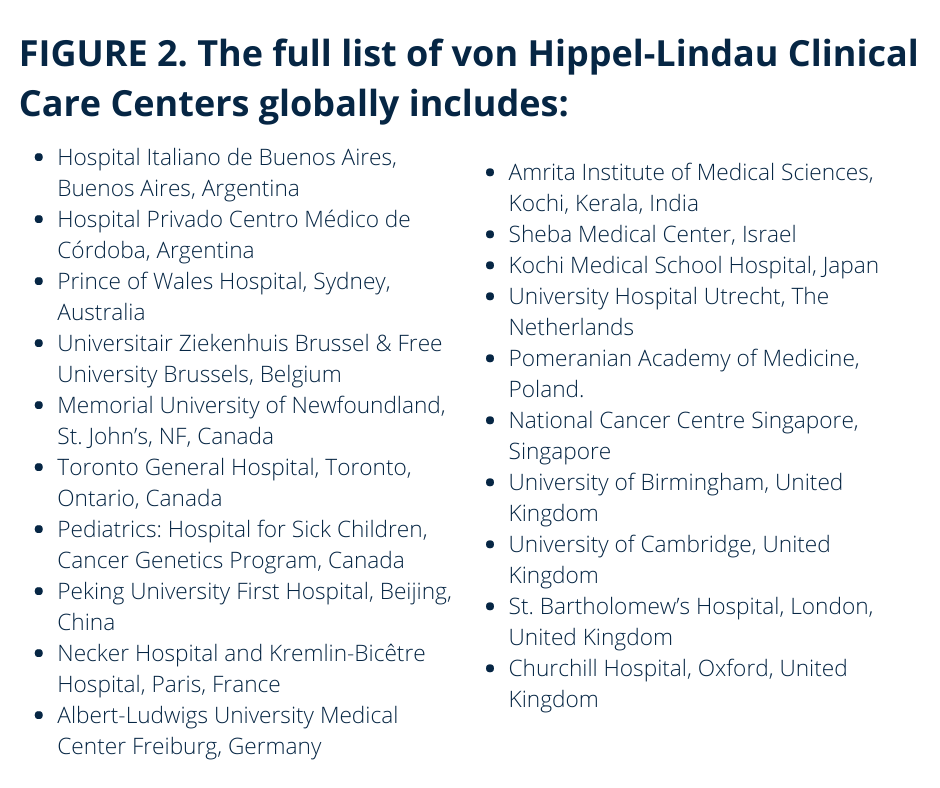VHL Disease: Monitoring Is Imperative, But Research Efforts Are Gaining Ground
VHL disease is defined as a rare, inherited disorder that causes tumors and cysts to grow in specific areas of the body, including the brain, spinal cord, eyes, inner ear, adrenal glands, pancreas, kidney, and reproductive tract.
Kim E. Nichols, MD

A woman in her 20s with von Hippel-Lindau (VHL) syndrome was undergoing routine surveillance for the inherited condition, when a dramatically enlarged hemangioblastoma in her spinal cord was detected.
She was also pregnant.
Surprisingly, she didn’t have symptoms. Even still, the surgery was able to be successfully completed to avoid spinal cord compression. Had her disease not been monitored so routinely, it is unclear whether surgical intervention would have still been an option.
“That, to me, was a really dramatic presentation, and one that I didn't expect, but one for which I'm very grateful that we had surveillance as an option,” Kim E. Nichols, MD, director of the Cancer Predisposition Division at St. Jude Children’s Research Hospital told OncLive. “It’s a great example of the importance of surveillance and intervention [in VHL].”
It may sound complicated, said Nichols, but having a VHL diagnosis shouldn’t consume a patient’s life. In fact, monitoring through routine screenings is one of the most important components of care for patients with the inherited condition, which puts them at an increased risk for developing tumors.
“It's really important that people recognize the importance of monitoring, to follow through with surveillance, but also not to let that dictate their lives. Patients with VHL are no different than anyone else,” said Nichols. “They may have to have additional tests, but it's all meant to keep them healthy and it's a very important thing to do. Don't let it cause great anxiety because, ultimately, the outcomes are excellent. You just have to be a little bit more careful about caring for yourself.”
VHL disease is defined as a rare, inherited disorder that causes tumors and cysts to grow in specific areas of the body, including the brain, spinal cord, eyes, inner ear, adrenal glands, pancreas, kidney, and reproductive tract.1 Although many of these cases are benign, others can develop malignant tumors.
Typically, VHL syndrome is caused by a VHL gene mutation, and symptoms do not appear until young adulthood.
“VHL syndrome is a relatively rare genetic syndrome; it's thought to affect about 1 in every 35,000 to 36,000 individuals,” said Nichols. “Of course, this includes adults as well as children. In the United States, there are probably around about 10,000 people with VHL syndrome; around the world, it is about 200,000 [people], so not very many, as you can appreciate.”
Patients with VHL are also at an increased risk of presenting with rare types of tumors, including hemangioblastoma and pheochromocytomas.
“These can occur in children; they can occur at any time during the life course of an individual’s [life], from patients as young as infancy to toddlerhood, all the way up into the older years,” explained Nichols.
However, those with VHL syndrome have an increased risk of certain types of other cancers, such as clear cell renal cell carcinoma (RCC) and neuroendocrine tumors of the pancreas. Approximately 70% of patients with VHL end up developing RCC by the age of 60 years and it is the leading cause of death.2
While prognosis for children with VHL-associated disease is “excellent,” according to Nichols, the challenge and essential component of care for these patients is surveillance, as the tumors can slowly grow and impinge on organs.
“They can cause problems that way. For example, there is a rare tumor type called an endolymphatic sac tumor; this is a benign tumor in the portion of the ear that helps you to hear, and these tumors can be very small,” Nichols explained. “However, if they press on the auditory structures in the wrong way, you can end up with deafness. Therefore, prognosis from a life-expectancy perspective is very good, but you have to be very careful about organ dysfunction due to the presence of these tumors.”
Intervention strategies generally involve surgery, or, if it is a retinal hemangioblastoma, then laser therapy, cryotherapy, or heat therapy may be applied to the small tumor, said Nichols, who added that the surgeries are very precise so as to not cause any damage to the surrounding organ(s).
FIGURE 1: The full list of von Hippel-Lindau Clinical Care Centers in the United States

Therapeutic Efforts
In adult patients, recent research efforts for effective therapies designed to target VHL disease–associated RCC comprise immunotherapy, HIF-2α inhibitors, and potentially CDK4/6 inhibitors.3 According to preliminary data, HIF plays a critical role in VHL tumor suppressor protein–defective tumor formation.4
Transplantation is another approach that has been tested. Transcriptional upregulation of hERV-E in clear cell RCC is driven by HIF2, and therefore, recognition of an hERV-derived antigen by allogenic T cells leads to disease regression.5 In a trial of patients with metastatic clear cell RCC, 48% of patients had a disease response following allogeneic stem cell transplant.
Additionally, the HIF-2a inhibitor belzutifan (formerly MK-6482) has been gaining traction in patients with VHL disease–associated RCC. In an open-label, phase 2 study (NCT03401788) that was presented during the 2020 ASCO Virtual Scientific Program, investigators tested the efficacy of belzutifan, a potent, selective, small molecule inhibitor, in patients with VHL disease who have at least 1 measurable RCC tumor, did not receive prior systemic anticancer therapy, did not have metastatic disease, and had an ECOG performance status of either 0 or 1.
The results comprised 61 adult patients who received 120 mg of oral belzutifan once daily until disease progression or intolerable toxicity. Results showed that treatment with the agent led to a confirmed objective response rate (ORR) of 27.9% (95% CI, 17.1-40.8), which included 17 partial responses (PRs).6 Eight patients (13%) achieved an unconfirmed PR. Responses in central nervous system, retinal, and pancreatic lesions, were also reported.
Additional data showed that 43 patients (70.5%) achieved stable disease with the HIF-2α inhibitor, and the median duration of response had not yet been reached (95% CI, 11.9-62.3). Notably, most of the patients on the trial (86.9%) experienced a reduction in the size of their target lesions, and the 52-week progression-free survival (PFS) rate was 98.3%.7
Regarding safety, any-grade treatment-related adverse effects (TRAEs) occurred in 96.7% of patients. TRAEs were mostly grades 1/2 (83.6%), consisting primarily of anemia (86.9%), fatigue (52.5%), and headache (36.1%). Grade 3 TRAEs were reported in 9.8% of patients and were primarily fatigue (4.9%) and anemia (3.3%).
In July 2020, the FDA granted a breakthrough therapy designation to belzutifan for the treatment of patients with VHL disease–associated RCC who have nonmetastatic tumors of less than 3 centimeters, unless immediate surgery is necessitated, based on the phase 2 data.
The TKI pazopanib (Votrient) in hydrochloride formulation was tested in a phase 2 trial of adult or pediatric patients with VHL syndrome (NCT01436227).8 Treatment was given daily for 6 months until disease progression or unacceptable toxicity. Data showed that the ORR was 42% (n = 13/31), and 23% (n = 7/31) chose to stay on treatment after 6 months. The safety profile was similar to what has been reported with pazopanib in prior trials. Overall, the findings warrant further investigation in this landscape.
“Many of the tumors, particularly these hemangioblastomas, but also the RCCs in patients with VHL are very vascular tumors,” Nichols noted. “Any drugs that can interfere with, or reduce, blood vessel formation have potential to be of benefit in patients with VHL.”
These therapeutic efforts have proven to be an exciting advance on the horizon, but Nichols remains focused on surveillance—especially for the pediatric population.
“Right now, for kids, we mostly monitor; we try to pick up tumors at the earliest, smallest, and most successfully treatable stages,” said Nichols. “In the future, maybe we will have medications like [belzutifan] where we can even prevent the tumors from occurring. That's my goal.”
Raising VHL Awareness
Various institutions are driving efforts to spotlight VHL and not only provide personalized, optimal care for patients with the condition, but to make progress on improving outcomes through innovative research efforts.
In September 2020, the VHL Alliance designated St. Jude Children’s Research Hospital as a von Hippel-Lindau Clinical Care Center, and is the first and only recognized Clinical Care Center dedicated solely to children.9 These centers are committed to providing “outstanding, holistic, coordinated care” for patients with VHL10 and have been established to provide ongoing care for local patients, meet the specialty care needs of those who must to travel to the center, and serve as a local resource for patients in college or who are traveling.
“We brought together all of the experts who take care of patients with VHL—for example, surgeons and neurologists, nephrologists and oncologists,” concluded Nichols. “Our goal is that by bringing everyone together, we could provide a source of information and serve as a resource to individuals who live in the St. Jude catchment area who have VHL or might need to be evaluated and monitored for it. Many of the communities in this area are relatively underserved, so we wanted to try to make ourselves available to the families in this area and to provide expertise for anyone who might have VHL syndrome.”
FIGURE 2. The full list of von Hippel-Lindau Clinical Care Centers globally

References
- VHL syndrome. National Cancer Institute. https://bit.ly/3dinVYJ. Accessed February 16, 2021.
- van Leeuwaarde RS, Ahmad S, Links TP, and Giles RH. Von Hippel-Lindau syndrome. GeneReviews. 2015. http://www.ncbi.nlm.nih.gov/books/NBK1463.
- Kaelin WG. New therapies for kidney cancer based on studies of the Von Hippel-Lindau tumor suppressor gene. Presented at: IKCS 2020 Virtual Experience; November 6-7, 2020; Virtual.
- Kim WY, Kaelin WG. Role of VHL gene mutation in human cancer. J Clin Oncol. 2004;22(24):4991-5004. doi: 10.1200/JCO.2004.05.061
- Takahashi Y, Harashima N, Kajigaya S, et al. Regression of human kidney cancer following allogeneic stem cell transplantation is associated with recognition of an HERV-E antigen by T cells. J Clin Invest. 2008;118(3):1099-1109. doi:10.1172/JCI34409
- Jonasch E, Donskov F, Iliopoulos O, et al. Phase II study of the oral HIF-α inhibitor for Von Hippel-Lindau disease–associated renal cell carcinoma. J Clin Oncol. 2020;38(suppl 15):5003. doi:10.1200/JCO.2020.38.15_suppl.5003
- Srinivasan R, Donskov F, Iliopoulos O, et al. Phase II study of the oral HIF-2α inhibitor MK-6482 for Von Hippel-Lindau (VHL) disease-associated clear cell renal cell carcinoma (ccRCC): update on RCC and non-RCC disease. Ann Oncol. 2020;31(suppl 4):S1158. doi:10.1016/j.annonc.2020.08.2255
- Jonasch E, McCutcheon IE, Gombos DS, et al. Pazopanib in patients with von Hippel-Lindau disease: a single-arm, single-centre, phase 2 trial. Lancet Oncol. 2018(10):1351-1359. doi: 10.1016/S1470-2045(18)30487-X
- Pazopanib hydrochloride in treating patients with von Hippel-Lindau syndrome. Clinicaltrials.gov. Updated September 19, 2011. Accessed February 15, 2021. https://bit.ly/3qsfvSy
- St. Jude recognized as clinical care center for rare von Hippel-Lindau syndrome. News release. St. Jude Children’s Research Hospital. September 30, 2020. Accessed February 15, 2021. https://bit.ly/37ioDBp
- Clinical Care Centers Directory. VHL Alliance. January 13, 2021. Accessed February 15, 2021. https://bit.ly/3u0JNxD



